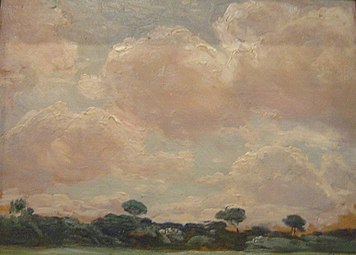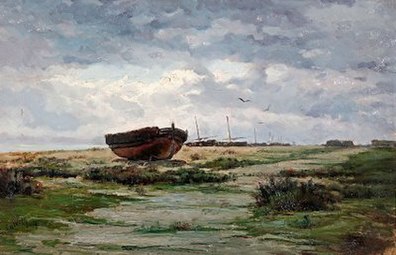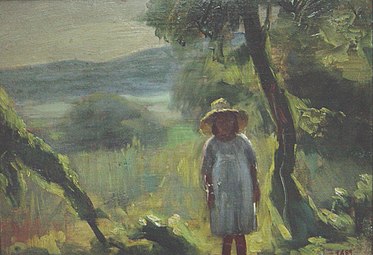
Santiago Rusiñol i Prats was a Catalan painter, poet, journalist, collector and playwright. He was one of the leaders of the Catalan modernisme movement. He created more than a thousand paintings and wrote numerous works in Catalan and Spanish.

Ramon Casas i Carbó was a Catalan artist. Living through a turbulent time in the history of his native Barcelona, he was known as a portraitist, sketching and painting the intellectual, economic, and political elite of Barcelona, Paris, Madrid, and beyond. He was also known for his paintings of crowd scenes ranging from the audience at a bullfight to the assembly for an execution to rioters in the Barcelona streets. Also a graphic designer, his posters and postcards helped to define the Catalan art movement known as modernisme.

Modest Urgell i Inglada, also known by the nickname Katúfol was a Spanish landscape painter and comic playwright. He used his nickname for cartoons and illustrations.

Jordi Pagans i Monsalvatje was a Catalan and Spanish painter.
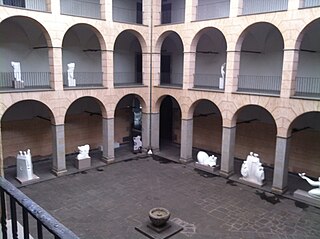
The Museu de la Garrotxa is a museum in Olot, Catalonia, Spain. It is associated with the Museu Nacional d'Art de Catalunya in Barcelona; the other institutions in this association are the Biblioteca Museu Víctor Balaguer and the Cau Ferrat (Sitges). The museum is housed in an 18th-century neoclassical building designed by architect Ventura Rodríguez.

The Olot school of landscape painting is a group of painters that created an artistic style in the second half of the 19th century. It includes not simply artists from Olot, but all artists whose artworks were inspired by the countryside of Olot. By extension, artists connected with Olot and its comarca, Garrotxa.

Joaquim Vayreda i Vila was a Spanish landscape painter. He was originally influenced by the Barbizon school, but later became one of the founders of the Olot school.
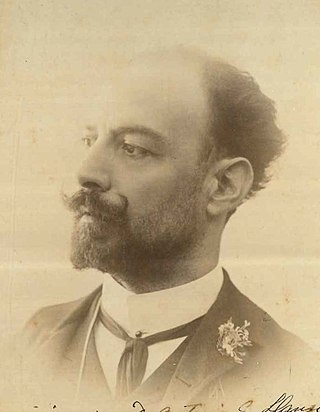
Baldomer Galofre i Giménez, in Spanish: Baldomero Galofré y Jiménez was a Spanish painter.

Lluïsa Vidal i Puig was a painter. Raised in a well-off family closely related to Catalan modernist circles, she is known as the only professional woman painter of Catalan modernism, and one of the few women of that period who went abroad to receive art lessons.
Glòria Muñoz is a Spanish painter, and a professor of painting at the University of Barcelona.
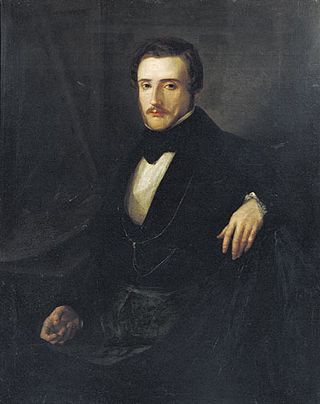
Lluís Rigalt i Farriols was a Spanish landscape painter and graphic artist.

José Cusachs y Cusachs was a Spanish soldier and painter.

Lluís Graner i Arrufí, or Arrufat in Spanish was a Spanish painter in the Realistic style, artistic director and theater entrepreneur. After achieving notable success in painting, he moved into lighting design for theatrical shows and developed the Catalan lyrical theater genre of "musical visions".

Enric Clarasó i Daudí was a modernist Catalan sculptor.

Eliseo Meifrèn i Roig was a Spanish Impressionist painter.

Néstor Martín-Fernández de la Torre, generally known simply as Néstor was a Canarian painter and theatrical designer who worked in the Symbolist and Art Deco styles.
Gabino Rey Santiago, known artistically as Gabino, was a Spanish painter. He was the son of the republican politician Agustín Rey Fonseca and father of the painter Pablo Rey.

Marian Vayreda i Vila (1853-1903) was a Carlist soldier and activist, a painter and a Catalan writer. He is recognized as key representative of Catalan cultural renaissance of the late 19th century. He is particularly acknowledged for his 1904 novel, La Punyalada, declared one of the best Catalan literary works of all time. Politically Vayreda is considered a typical case of an identity located in-between Carlism and emerging Spain's peripheral nationalisms.

Josep Berga i Boix was a Spanish landscape painter; influenced by the Barbizon school and one of the founders of the Olot school. In his later years he was known as Avi Berga.
Ricardo Urgell Carreras was a Spanish painter. He was the son of modernist landscape painter Modest Urgell.


